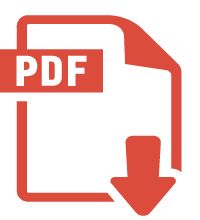Today, PDF format has become a universal standard for handling and displaying documents. It may be safely said that more than 98% of professional workstations worldwide do support it, thanks to the ubiquitous Adobe Reader which is available for free [1]. And given the stamps of approval by ISO bodies to PDF 1.4 and PDF/A for archiving purposes (2005), it seems PDF format is here to stay.
However, unlike Windows or Unix platforms where numerous products and components have been developed [2] to generate PDF documents, native MVS solutions are rather scarce. As of now, applications and services which are required to produce PDF files in these mainframe environments have currently the choice between three kinds of solutions:
- Output AFP [3] data to a third party z/OS product such as InfoPrint (external machine) or EPM (product running under JES.MVS within which it is integrated) which have the capability to transform AFP spools into PDF files.
- Output raw data to a third party engine which will analyse and process it – which means yet another component on yet another environment – and activate a PDF building product, usually running on either Linux or Windows.
- Buy a relatively expensive MVS PDF library from a third party provider such as Datalogics and acquire expertise on it
All of these solutions are relatively cumbersome, some of them lengthening workflow by adding important in-between components to overall production chains. Besides, the first option above, which is probably the most widespread, imposes the acquisition and | or at least the maintenance of an additional high level expertise in AFP while the PDF thus produced will be limited by the very features that AFP does support, by construction. Some examples among many:
- Reduced graphical capabilities: no slanted text, no color transparency and countless of other missing graphical features,
- Hierarchical bookmark trees involving several levels might be quite difficult to implement – an understatement,
- Embedded data not possible within target PDF,
- Document protection frequently not available
- Internal and | or external links to improve user experience not possible either, etc.
Last but not least, it is also recalled that format conversion tools from AFP to PDF generally decreases significantly the quality of the documents thus transformed while also increasing their size. Indeed, although they are all too often overlooked, size considerations are quite important when dealing with millions of documents which will be stored in archiving repositories for years or decades.
A much lighter alternative has been recently developed: FPDF4ZOS. The purpose of this web site is to give an overview of this tool and to present its main features.
[1] Adobe Reader is downloaded several hundreds of thousands times each day across the planet …
[2] First and certainly foremost: Acrobat and its distiller companion, but countless of other tools do exist; see www.planetpdf.com and | or www.pdfzone.com for more information.
[3] AFP stands for Advanced Function Printing and is the IBM proposed technology for mass printing.
